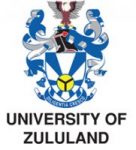Second Year Statistics Modules
| Title | Distribution Theory | ||
|---|---|---|---|
| Code | SSTT111, SSTT112 | Department | Mathematical Sciences |
| Prerequisites | None | Co-requisites | SMTH111, SMTH112, SMTH221 |
| Aim | To introduce fundamental continuous distributions and their properties which will be used in Statistical Inference and which will form the foundation for all third year level statistics modules. | ||
| Content |
| ||
| Assessment | 40% Continuous Assessment Mark 60% Formal end of module exam (3 hours) | ||
| DP Requirement | 40% Continuous Assessment Mark 80% Attendance at lectures and tutorials. | ||
| Title | Statistical Inference | ||
|---|---|---|---|
| Code | SSTT212 | Department | Mathematical Sciences |
| Prerequisites | SSTT111, SSTT112 | Co-requisites | SSTT211, SMTH221, SMTH222 |
| Aim | To introduce students to estimation, and parametric- and nonparametric hypothesis tests. | ||
| Content |
| ||
| Assessment | 40% Continuous Assessment Mark 60% Formal end of module exam (3 hours) | ||
| DP Requirement | 40% Continuous Assessment Mark 80% Attendance at lectures and tutorials. | ||
